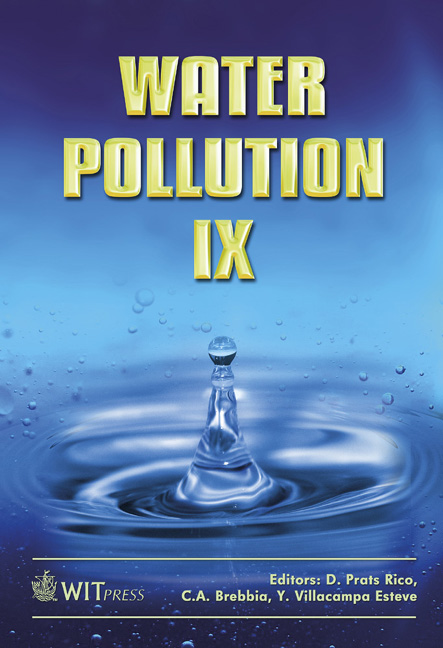Preliminary Analysis Of Water Pollution In A Small Lake In Western Mexico
Price
Free (open access)
Transaction
Volume
111
Pages
9
Page Range
13 - 21
Published
2008
Size
885 kb
Paper DOI
10.2495/WP080021
Copyright
WIT Press
Author(s)
T. Greenberg, H. Shear, J. de Anda Sanchez & M.-A. Ortiz-Jiménez
Abstract
Lake Zapotlán is a small (1100 ha) endorheic lake in western Mexico. The lake is an internationally recognized RAMSAR site, home to many migratory species of waterfowl. It receives point source pollution from partially treated sewage from Ciudad Guzman (population 85,000) and Gomez Farias (population 12,000), as well as non-point sources, including storm water, agricultural, and land clearing runoff from numerous farms and from deforestation surrounding the lake. Anthropogenic activities in the basin are putting the ecological sustainability of the lake at risk. The lake is hypertrophic and exhibits blooms of green algae and possibly cyanobacteria throughout much of the year. Along the shoreline of the lake, extensive beds of bulrush, called locally \“tule” (Typha latifolia), are found, as well as floating mats of water hyacinth (Eichhornia crassipes) likely due to excessive nutrient levels in the lake. This paper compares nutrient levels (nitrogen and phosphorus) for three different years since 1994. Keywords: eutrophication, tropical lakes, aquatic weeds, fisheries production, flux of nutrients, Zapotlán, non-point and point source pollution. 1 Introduction Lake Zapotlán is located in the south of Jalisco State, Mexico, between 19°34’ and 19°53’ north latitude and 103°24’ and 103°38’ west longitude (Figure 1).
Keywords
eutrophication, tropical lakes, aquatic weeds, fisheries production, flux of nutrients, Zapotlán, non-point and point source pollution.





